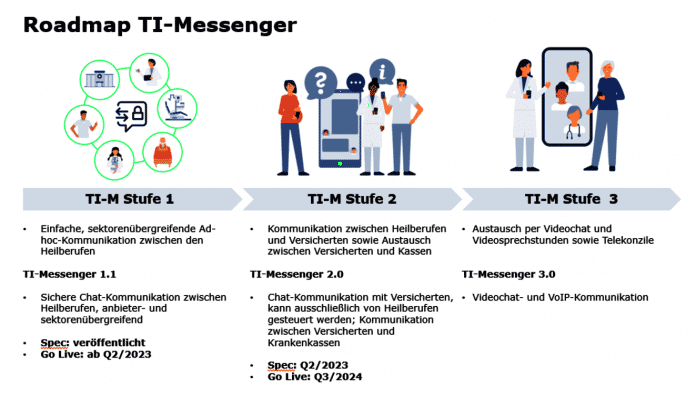Announcement
Gematik, which is in charge of digitizing the healthcare system, joins the Matrix Foundation, which has seen a sharp increase in the number of users, but suffers from insufficient financial support. This makes Gematik the second member of the foundation together with the Beeper messaging service, based on the Matrix.
The TIM messenger connected to the IT infrastructure (TI) also uses the Matrix open source messenger standard, whose code is available on Github under the Apache 2.0 license for various operating systems. According to Matthew Hodgson, co-founder of Matrix and CEO of the open source client base Element, Gematik approached Matrix with the desire to work together on TI Messenger. This means that Gematik is also gaining influence on prioritizing the development of the Matrix protocol.
Gematik, for example, has defined a bridge between Matrix and the FHIR HL7 medical interoperability standard, which describes how health data is exchanged between industries and providers, for example by pharmacies, hospitals, insurance companies and other stakeholders in the healthcare sector. Furthermore, Gematik wants to enable a high “level of security out of the box” with the TI proxy function. Servers should be isolated from each other so they don’t have to trust different implementations of different frameworks. This should also help create zero trust boundaries.
Hodgson describes identity assignment as “another great thing”, for which Gematik has also proposed an extension. In return, they funded the Matrix Foundation, for example, a security audit for next-generation end-to-end encryption.
TIM arrives this year
Announcement
Later this year, TI Messenger will support ad hoc communication between doctors on smartphones, tablets and in the desktop version. For further versions, it is planned that, in addition to medical professionals, insured persons and employees of health insurance companies can also use the service to exchange short messages, voice messages and pictures. The electronic prescription token should then also be sent via TIM. The latter is currently also possible through the KIM service (communication in medicine), which is mainly intended for sending e-mails, but not for immediate communication.

Roadmap for TI Messenger
(Image: Gematik)
Current hurdles also include according to Gematik In addition to the lack of uniform specifications for authentication, there are also obstacles due to the lack of interoperability between messaging service providers. In the future, the Digital Markets Act will also oblige messaging service providers to be interoperable with other messaging services.
Matrix currently still uses the double ratchet method, but according to Hodgson, future development should go in the direction of the Messaging Layer Security (MLS) standard developed by the Internet Engineering Taskforce (IETF), to which the Matrix Foundation has also contributed. With a standardization of MLS, interoperability of different messengers should be achieved.
(mack)



